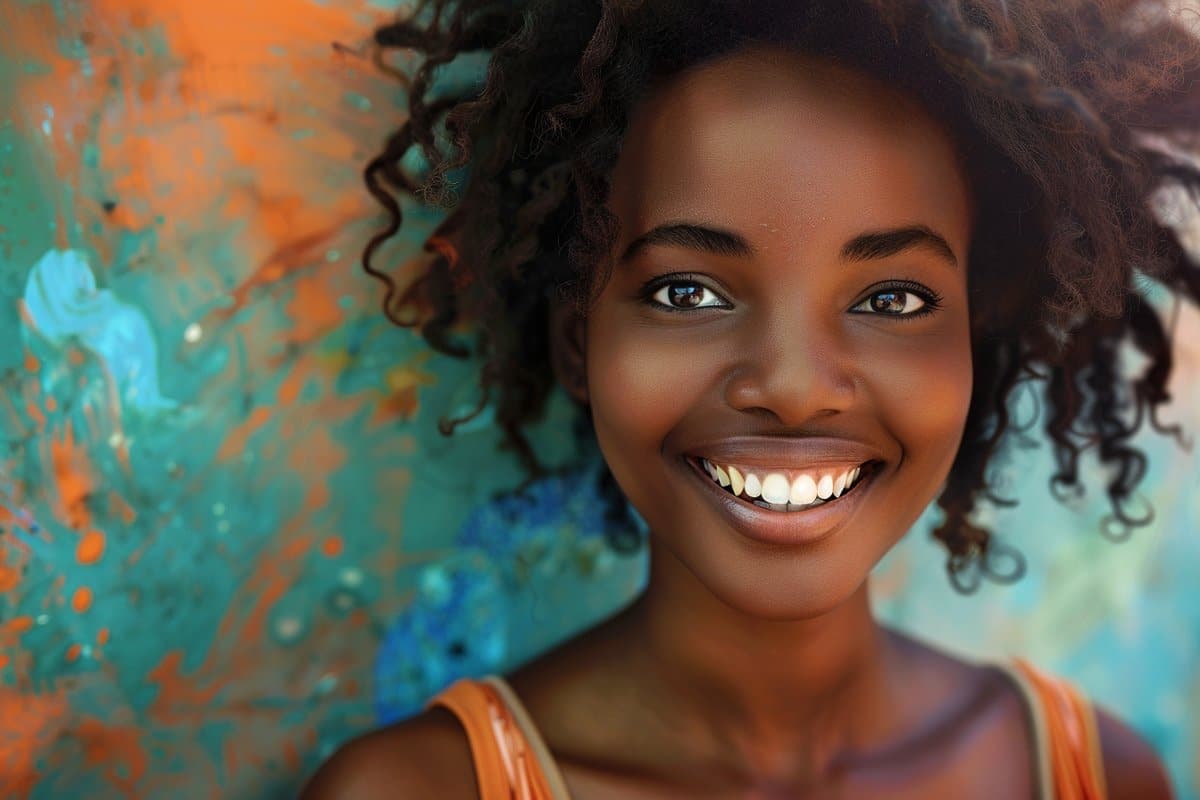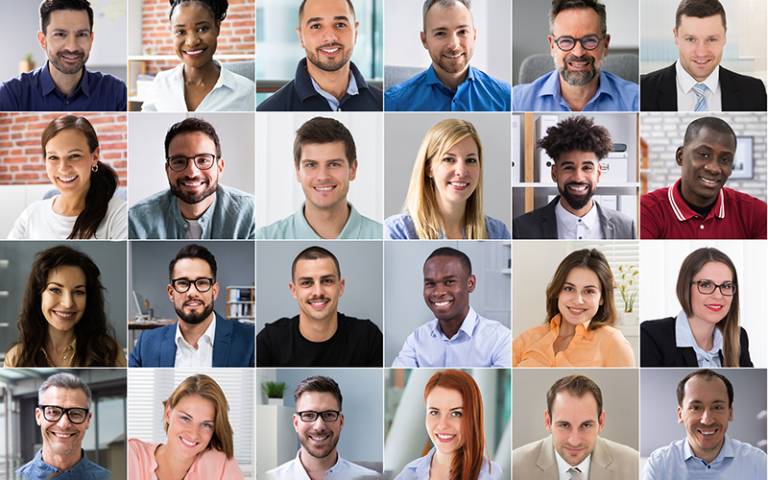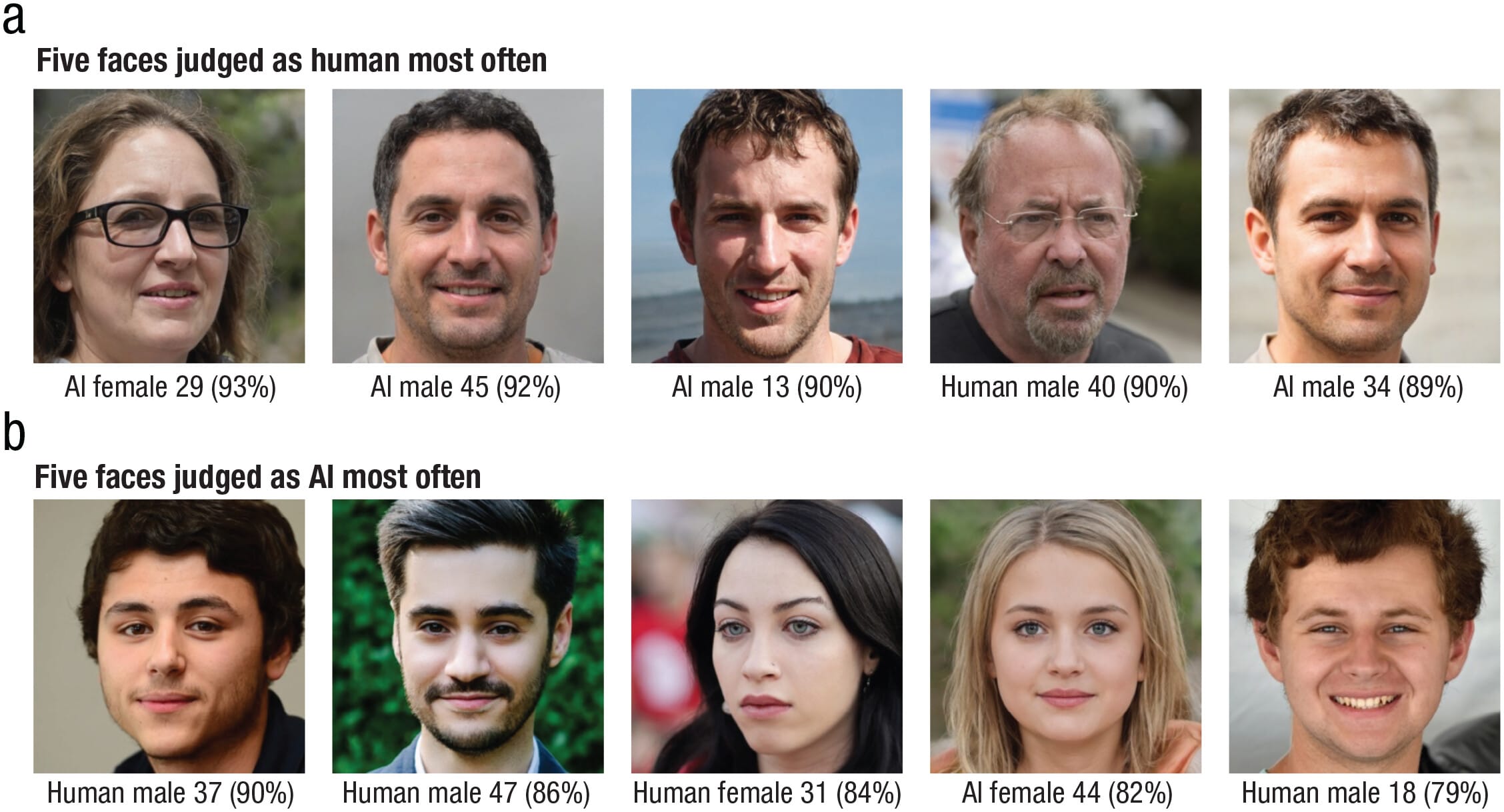Have you ever stared at an AI-generated image and wondered if it was inspired by a real person? You’re not alone.
With the rise of AI technology, images created by algorithms are becoming more lifelike and intriguing. But do these digital faces have a real-world counterpart, or are they purely fictional creations? This question might have crossed your mind more than once, especially as AI continues to blur the lines between reality and imagination.
Understanding the origin of these images is crucial, not just for curiosity’s sake, but for ethical reasons too. Are the faces you see the result of an artist’s imagination, or are they crafted using data from real people? By diving deeper into this topic, you can uncover the fascinating ways AI is shaping our perception of identity and creativity. This exploration promises to be enlightening, and it might even change the way you view digital art forever. So, if you’re ready to unravel the mystery behind AI images, keep reading!
Ai Image Generation
AI Image Generation has become a fascinating topic for many. You may wonder if these AI-generated images are based on real people or just products of creative algorithms. Whether it’s a digital portrait or a surreal landscape, AI has made it possible to create images that are both stunning and imaginative. As the technology advances, the potential applications for AI-generated images are expanding. Businesses are increasingly exploring aigenerated images for commercial use, leveraging these creations for marketing, product design, and entertainment. This shift not only enhances creativity but also raises important questions about copyright and the ethics of using algorithmically generated content. Many artists and creators are now turning to AI image generation platforms to enhance their work or explore new styles. These platforms offer a plethora of tools that allow users to experiment with different aesthetics and ideas, pushing the boundaries of traditional art forms. As technology continues to evolve, the possibilities for AI-generated imagery seem limitless, opening up a new frontier in visual expression.
How Ai Creates Images
AI doesn’t just copy existing images; it crafts new ones from scratch. Imagine having an artist who never gets tired and can create endlessly. AI uses data from countless images to understand shapes, colors, and textures. It combines these elements in unique ways to generate new images that seem familiar yet fresh.
AI tools, like GANs (Generative Adversarial Networks), play a big role here. They consist of two neural networks that compete with each other. One creates images, while the other evaluates them for authenticity. This process helps refine images until they look incredibly realistic.
Role Of Neural Networks
Neural networks are the backbone of AI image generation. They mimic the way human brains work, processing information and learning from it. Think of them as a complex web of interconnected nodes that can make sense of vast amounts of data.
These networks analyze features like facial expressions, lighting, and angles. For example, when you input data about a person’s face, the neural network can create an entirely new image with realistic features but without being a replica of a real person. This is why AI-generated images can be so lifelike yet unique.
Have you ever wondered if an AI-generated image could be mistaken for a real person? It’s a valid question that highlights the power and potential of AI technology. As these systems continue to evolve, the line between real and artificial blurs further.
Consider how this technology could impact fields like advertising or entertainment. You might soon see AI-created models or actors that never existed. This opens up exciting possibilities, but also raises ethical questions about authenticity and representation.
So, what do you think? Are AI images just a creative curiosity, or do they challenge our understanding of reality and art? Your thoughts could shape the future of this technology.

Credit: neurosciencenews.com
Data Sources For Ai Images
Understanding where AI images come from can be fascinating. Are these images crafted from real people, or do they spring from pure imagination? The truth lies in the data sources used to create AI images. Let’s explore the unique blend of image datasets that fuel AI creativity. These datasets often include millions of photographs and artworks, encompassing a wide range of styles and subjects. By analyzing patterns within this rich tapestry of visual information, AI systems can generate unique and diverse images that may resemble real-life subjects or imaginative concepts. Understanding these ai image generation sources is crucial for appreciating the creative capabilities and limitations of artificial intelligence in the art world.
Image Datasets Utilized
AI models rely heavily on image datasets to generate visuals. These datasets contain thousands, sometimes millions, of images. They offer a wide range of subjects, scenes, and styles to train the AI.
Consider how a painter uses different colors and techniques to create art. Similarly, AI models use varied datasets to produce images. Some popular datasets include ImageNet, COCO, and CelebA.
ImageNet provides a massive collection of categorized images. COCO offers detailed descriptions alongside images. CelebA focuses on celebrity faces, providing facial features and expressions.
Public Domain And Proprietary Sources
Public domain sources are a treasure trove for AI image creation. They include images freely available for public use. Think of them as the community library for AI developers.
On the other hand, proprietary sources are like exclusive clubs. They offer unique images not readily available to everyone. Companies often pay for these to get ahead in AI development.
Imagine having access to a secret vault of rare photographs. Proprietary sources provide that edge, ensuring the AI can generate something distinct. But is exclusivity worth the potential cost?
In your experience, do you find AI-generated images intriguing or unsettling? The origin of these images is as diverse as the outputs themselves. With the right blend of datasets and sources, AI continues to push the boundaries of creativity. What other sources could enhance the realism of AI images?
Real People Vs. Synthetic Creations
In the digital age, AI images blur the lines between real and synthetic. These images intrigue and sometimes confuse us. They capture the essence of human features but can be entirely synthetic. Understanding the difference between real people and AI-generated faces is essential. This knowledge helps us appreciate the technology and its implications.
Blending Real And Fictional Elements
AI images combine real and fictional traits. Artists use AI to create faces that seem real but don’t exist. The technology learns from countless real faces. It then generates new images based on that data. The result is a blend of reality and fiction. These creations can mimic real expressions and emotions. Yet, they remain entirely artificial.
Identifying Real Faces In Ai Images
Spotting real faces among AI images can be tricky. AI-generated faces look authentic and lifelike. But there are subtle clues that can help. Real images often show slight imperfections. AI images may lack these small details. They might appear too symmetrical or flawless. Observing these differences can help identify true human faces.
Credit: www.engadget.com
Ethical Considerations
Ethical considerations arise with AI images resembling real people. Concerns about privacy and consent are significant. AI technology can create lifelike images, sometimes indistinguishable from photographs, leading to questions about identity and ownership. Ensuring ethical standards is crucial in protecting individuals and respecting their likenesses.
In the realm of AI-generated images, ethical considerations are at the forefront of discussions. As technology evolves, so do the moral questions surrounding its use. How do we ensure that AI respects human rights and dignity? Let’s dive into some critical aspects like privacy concerns and the need for consent.Privacy Concerns
AI images often mimic human features with stunning accuracy. But have you ever wondered if these images are based on real people? Privacy concerns arise when AI uses data from individuals without their knowledge. Imagine your face being part of a dataset without you ever knowing it. This raises questions about how your personal data is being used and who controls it.Using AI to generate images could inadvertently lead to identity theft or misuse. Even if images are generated from scratch, the data used to train AI models often includes personal and sensitive information. You deserve to know if your data is part of an AI training model, and what that means for your privacy.Consent And Image Use
Consent is crucial when it comes to using personal data. But what does consent look like in the digital age? If an AI-generated image resembles you, should you have a say in how it’s used? The lack of clear guidelines for obtaining consent in AI applications can lead to ethical dilemmas.Imagine seeing an AI-generated image that looks eerily similar to you in an advertisement. Did you agree to this? Without explicit consent, companies can exploit AI images in ways that may not align with your personal values. It’s essential for developers to create systems that respect user consent and offer transparency in how images are used.These ethical considerations invite us to rethink how we interact with AI technology. They challenge us to demand more transparency and accountability. How will you ensure your rights are respected in this AI-driven world?Impact On Society
Artificial intelligence is changing how we see the world, especially in the realm of images. AI-generated faces, which may or may not be based on real individuals, have a profound impact on society. As these images become more widespread, they influence various sectors, including media, art, and public perception.
Influence On Media And Art
Media outlets are beginning to use AI images for diverse purposes, from advertising to news stories. These images offer a cost-effective solution, but they also raise ethical questions about authenticity. When you see a face in an ad or article, can you trust that it’s real?
Artists have also embraced AI, using it to create stunning visuals that challenge traditional techniques. AI-generated art is opening new avenues for creativity, but it also prompts us to ask: what does it mean to be an artist today? Are we losing the human touch?
Public Perception Of Ai-generated Faces
As AI faces become more common, your perception of them can be influenced by their usage in daily life. Some people find them fascinating and innovative, while others are concerned about privacy and consent. How do you feel about seeing a computer-generated person who might look like someone you know?
The accuracy of AI faces can also impact trust. If an AI image looks convincing, it might be used to spread misinformation. How do you determine what’s real? This uncertainty is prompting discussions about the need for transparency and regulation.
AI images are becoming a part of your world, whether you notice them or not. It’s crucial to understand their impact and think critically about their role in society. Are we ready for a future where reality blurs with artificial creations?

Credit: www.ucl.ac.uk
Future Of Ai Image Technology
AI image technology creates images that mimic real people. These images can look incredibly lifelike, causing confusion about their origins. As AI evolves, distinguishing between real and AI-generated images may become increasingly difficult.
The future of AI image technology is rapidly unfolding, sparking curiosity and excitement. AI-generated images are becoming a fascinating topic as they blur the lines between reality and digital creation. With advancements in technology, these images are not just about pixels; they’re about possibilities.Advancements In Realism
AI has come a long way in creating images that look incredibly real. Today, AI can generate faces that are almost indistinguishable from photographs of actual people. This raises the question: how close are we to creating AI images that can fool even the most discerning eye?Every year, AI models like GANs (Generative Adversarial Networks) get better at understanding and replicating human features. They can now mimic the subtleties of facial expressions, skin texture, and even lighting effects. Imagine a time when AI images are so realistic, they could be used in movies, advertisements, or even as virtual influencers.The challenge, however, lies in using this power responsibly. As AI-generated images become more lifelike, ethical considerations around privacy and consent become critical. How do we ensure these images are used appropriately and do not infringe on real people’s identities?Potential For Personalized Ai Faces
Imagine having an AI that can generate a face tailored just for you. Personalized AI faces could revolutionize gaming, virtual reality, and even online interactions. You could have an avatar that looks and feels like an extension of yourself.This technology also has the potential to impact marketing and customer service. Brands could create personalized customer experiences by using AI faces that resonate with individual preferences. But how do we balance personalization with privacy?While personalized AI faces offer exciting opportunities, they also require us to think critically about data usage and individual rights. Are we ready to embrace this technology in a way that respects personal boundaries and promotes trust?The future of AI image technology holds immense promise. As we navigate these advancements, it’s crucial to stay informed and engaged in the conversation. What are your thoughts on the ethical implications of AI-generated images?Frequently Asked Questions
Are Ai Pictures Real People?
AI-generated pictures are not real people. They are created using algorithms and do not depict actual individuals. These images are synthesized by AI models, producing human-like appearances without corresponding to any real person. AI technology generates these visuals for various purposes, such as art, entertainment, or advertising.
Are Ai-generated Faces Real?
AI-generated faces are not real; they are computer-generated images. Algorithms use data to create lifelike faces. These images resemble real human faces but do not belong to actual people. AI technology generates unique features, making them look authentic.
How Are People Getting Ai-generated Pictures?
People get AI-generated pictures using AI tools like DALL-E, Midjourney, and Stable Diffusion. They input text prompts, and the AI creates images based on those descriptions. These tools are accessible online and offer free or subscription-based models for generating creative and unique images.
Why Do Ai-generated Images Look Weird?
AI-generated images can appear strange due to limitations in understanding real-world context and details. Algorithms may struggle with textures, proportions, and realistic features. Training data quality and quantity impact image accuracy. AI models sometimes mix unrelated elements, resulting in odd visuals.
Continuous improvements aim to enhance realism in AI-generated imagery.
Conclusion
Understanding AI images can be tricky. They often mimic real people. Technology keeps evolving. Some images might resemble real faces. This leads to confusion. It’s essential to know AI’s capabilities. AI creators aim for realism. But not all images are of real people.
Using AI responsibly is crucial. Misuse can lead to privacy issues. Educating yourself helps in making informed choices. Stay curious about AI advancements. Embrace technology wisely. Always question the source of images you encounter. This knowledge empowers you. Stay informed and protect your privacy.
